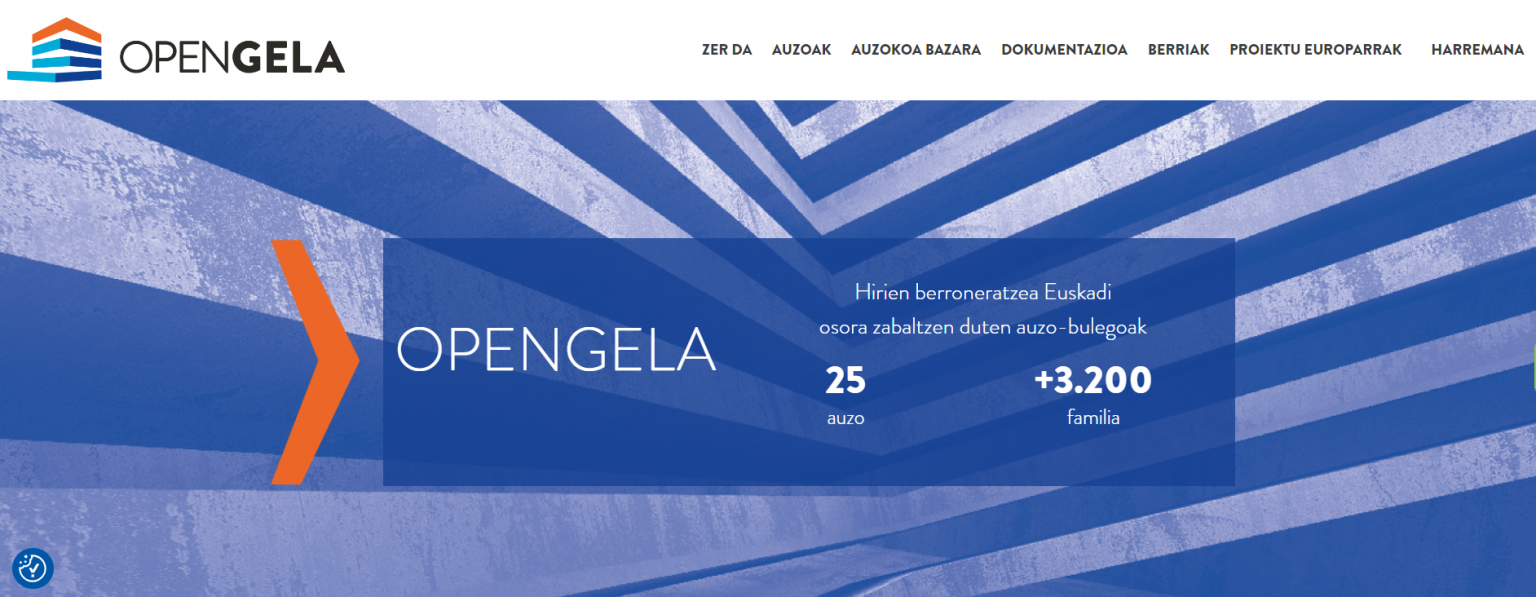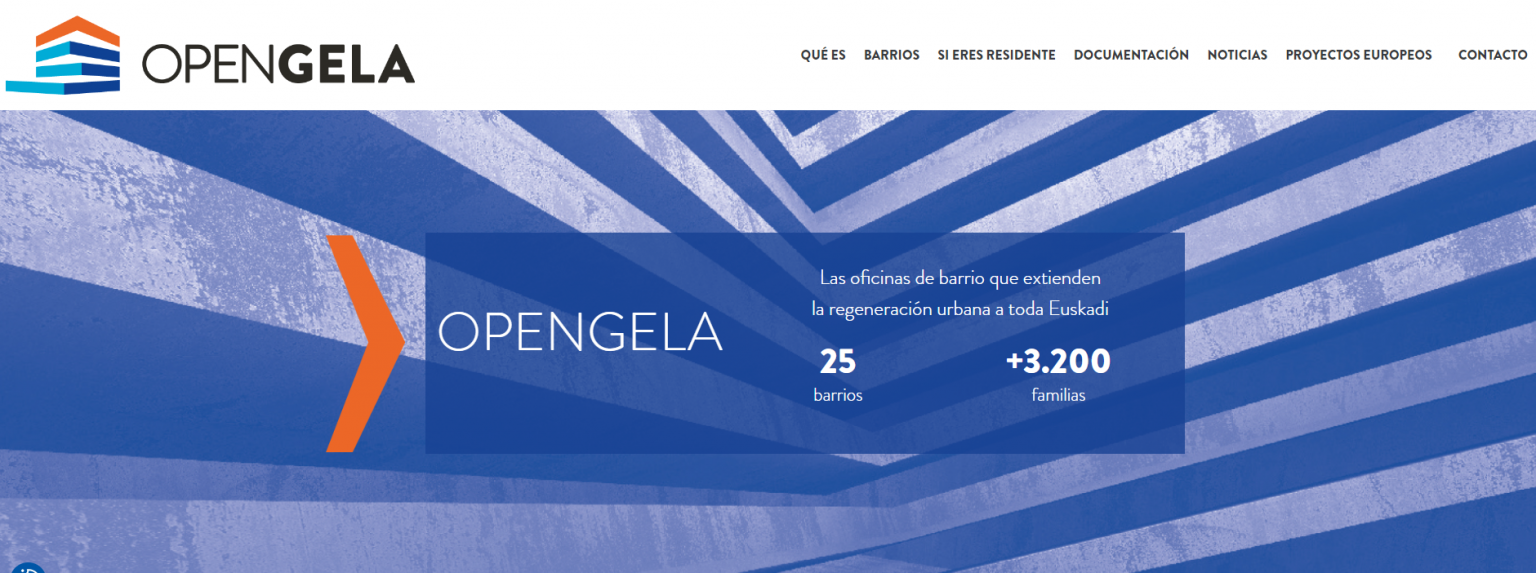
- El Gobierno Vasco organizó un evento en el que reunió a miembros destacados de la Comisión Europea y del Parlamento Europeo, así como a representantes del sector financiero, la industria, la investigación y el tercer sector.
El 15 de febrero el Gobierno Vasco celebró en la Delegación de Euskadi en Bruselas una conferencia con un doble objetivo. Por una parte, presentar a los diferentes agentes europeos interesados los avances de la regeneración urbana en Euskadi, y cómo se está desarrollando a través del programa Opengela y el nuevo proyecto europeo BIRTUOSS. Por otra, recoger las aportaciones de los diversos agentes a nivel europeo y sobre cómo desarrollar modelos eficaces para facilitar la implementación de la legislación comunitaria en la materia.
Durante la Conferencia se abordó la regeneración urbana integral desde una perspectiva vasca y europea, poniendo el foco en cuatro aspectos fundamentales: La integración social, la promoción de la empleabilidad y el aprendizaje a lo largo de la vida, la implicación de empresas y PYMES de varios sectores, la financiación inclusiva y las herramientas para facilitar el monitoreo de la rehabilitación a través del pasaporte y el registro digital del edificio.
Al acto asistieron varios socios de Opengela – BIRTUOSS: Ignacio de la Puerta, director de Planificación Territorial y Agenda Urbana del Gobierno Vasco y coordinador del proyecto; Jon Ansoleaga, director general de Build:inn; Olga Martín, directora general de Aclima; Alex Carrascosa, miembro de EDE Fundazioa; Jokin Garatea, del equipo ejecutivo de GAIA; Andoni Hidalgo, consultor in-house de Gabineteseis; Jose Ramón López, del Ente Vasco de Energía (EVE), y Marta Lupatelli, responsable de proyectos de Fedarene.
De esta forma, se trató el modelo de ventanilla única como una herramienta de cohesión social. Personas expertas del ámbito social vasco presentaron el ejemplo de las mesas intersectoriales de integración y empleabilidad que están actualmente en marcha en más de 15 municipios vascos, y que abordan la regeneración urbana de la parte más vulnerable de la población. En relación con este punto, también se expuso que una de las conclusiones a las que ha llegado Opengela es la existencia de un fallo en el mercado financiero que deja a una parte importante de la población al margen de los proyectos de rehabilitación de edificios. Así, es necesario un amplio debate sobre cómo establecer mecanismos financieros que respondan a esta realidad, y debatir sobre cuál puede ser el papel de los poderes públicos a la hora de atender las necesidades de este amplio sector de la ciudadanía.
Por otro lado, representantes del mundo de la investigación -la Universidad del País Vasco y el Think-Tank BPIE, basado en Bruselas- pusieron de manifiesto la necesidad de un “cambio de enfoque” en la regeneración urbana, pasando desde la perspectiva del edificio individual a la escala de barrio. Esto se ejemplificó con la exposición de los resultados de un estudio recientemente publicado por BPIE (Buildings Performance Institute Europe) sobre “barrios de energía positiva”.
Además, en la conferencia también estuvieron presentes empresas vascas, que hablaron de su experiencia en un proyecto como BIRTUOSS, en el cual se integra activamente al sector privado, ya sean empresas de la construcción o medioambientales y tecnológicas. La experiencia les ha demostrado que existen graves carencias de mano de obra cualificada en los diferentes perfiles profesionales necesarios que dificultan el éxito del despliegue de la denominada ‘ola de renovación europea’. Así también, el modelo de ventanilla única se ha desarrollado hasta ahora con un cierto escepticismo hacia y desde el sector empresarial, y se cree que es el momento de involucrar de manera activa a la industria en esquemas de cooperación público-privada robustos y duraderos. Desde la perspectiva europea, una representante de Saint-Gobain subrayó que los retos de las empresas en Euskadi son compartidos por la industria europea en general, y alabó la visión de alianza multidisciplinar que se está siguiendo en BIRTUOSS.
Por último, el Gobierno Vasco hizo hincapié en que, incluso con una ciudadanía participativa, mecanismos financieros eficaces y una empresa con mano de obra bien formada, la transformación de las ciudades a través de la regeneración urbana integral a gran escala se enfrenta a un enorme reto operativo. De esta forma, el ejecutivo vasco presentó dos iniciativas innovadoras como son el pasaporte de edificio que incorpora un sistema de registro digital que puede representar una referencia en el camino que se debe seguir en un futuro cercano, y un libro digital desarrollado por la Universidad Politécnica de Cataluña en colaboración con Cíclica Arquitectura SCCL y financiado por Opengela, que consiste en mapas interactivos y personalizables que pueden ayudar a los organizadores a planear renovaciones e identificar las sinergias para aumentar la eficiencia energética de los barrios.
Así, la conclusión que se obtuvo de la charla fue que la ‘ola de renovación’ de la Unión Europea está entrando en un momento crucial y que, por tanto, son ahora los gobiernos nacionales y regionales los que deben implementarla de forma efectiva.
OPENGELA NEWSLETTER
Recibe todas las noticias relacionadas con Opengela.













